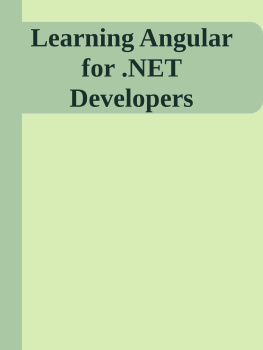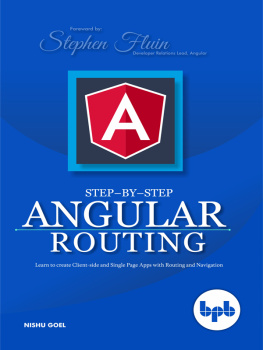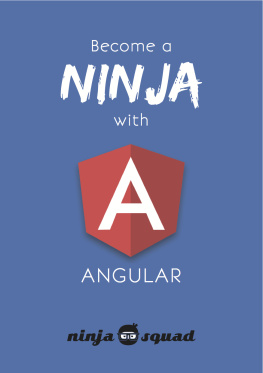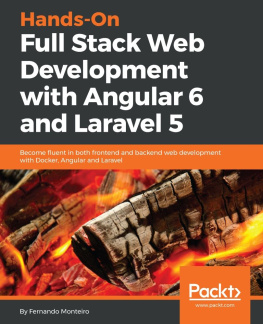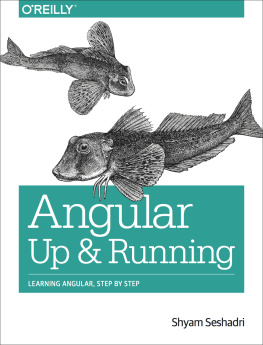Rajesh Gunasundaram - Learning Angular for .NET Developers
Here you can read online Rajesh Gunasundaram - Learning Angular for .NET Developers full text of the book (entire story) in english for free. Download pdf and epub, get meaning, cover and reviews about this ebook. year: 2017, publisher: Packt Publishing - ebooks Account, genre: Computer. Description of the work, (preface) as well as reviews are available. Best literature library LitArk.com created for fans of good reading and offers a wide selection of genres:
Romance novel
Science fiction
Adventure
Detective
Science
History
Home and family
Prose
Art
Politics
Computer
Non-fiction
Religion
Business
Children
Humor
Choose a favorite category and find really read worthwhile books. Enjoy immersion in the world of imagination, feel the emotions of the characters or learn something new for yourself, make an fascinating discovery.
- Book:Learning Angular for .NET Developers
- Author:
- Publisher:Packt Publishing - ebooks Account
- Genre:
- Year:2017
- Rating:4 / 5
- Favourites:Add to favourites
- Your mark:
Learning Angular for .NET Developers: summary, description and annotation
We offer to read an annotation, description, summary or preface (depends on what the author of the book "Learning Angular for .NET Developers" wrote himself). If you haven't found the necessary information about the book — write in the comments, we will try to find it.
Build efficient web apps and deliver great results by integrating Angular and the .NET framework
About This Book- Become a more productive developer and learn to use frameworks that implement good development practices
- Achieve advanced autocompletion, navigation, and refactoring in Angular using Typescript
- Follow a gradual introduction to the concepts with a lot of examples and explore the evolution of a production-ready application
If you are a .NET developer who now wants to efficiently build single-page applications using the new features that Angular 4 has to offer, then this book is for you. Familiarity of HTML, CSS, and JavaScript is assumed to get the most from this book.
What You Will Learn- Create a standalone Angular application to prototype user interfaces
- Validate complex forms with Angular version 4 and use Bootstrap to style them
- Build RESTful web services that work well with single-page applications
- Use Gulp and Bower in Visual Studio to run tasks and manage JavaScript packages
- Implement automatic validation for web service requests to reduce your boilerplate code
- Use web services with Angular version 4 to offload and secure your application logic
- Test your Angular version 4 and web service code to improve the quality of your software deliverables
Are you are looking for a better, more efficient, and more powerful way of building front-end web applications? Well, look no further, you have come to the right place!
This book comprehensively integrates Angular version 4 into your
Rajesh Gunasundaram: author's other books
Who wrote Learning Angular for .NET Developers? Find out the surname, the name of the author of the book and a list of all author's works by series.

